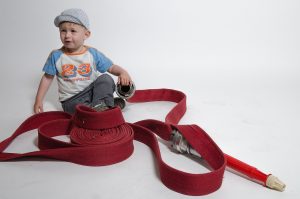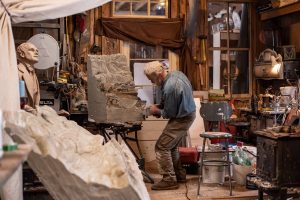4 Lesson 1B
1. Escuchar. Listen to the following audio clips and select the name of the person whose name you hear spelled using the Spanish alphabet.
| Arturo, Erick, Lara, Mireya, Oriette | |
| Arturo, Erick, Lara, Mireya, Oriette | |
| Arturo, Erick, Lara, Mireya, Oriette | |
| Arturo, Erick, Lara, Mireya, Oriette | |
| Arturo, Erick, Lara, Mireya, Oriette |
2. Escuchar. Listen to your instructor spelling one of the following words in Spanish and select the word you hear.
| Soy | Nos vemos | Dentista | Número |
| Apellido | Ingeniera | Trabajador | Profesión |
| Gracias | Consejera | Mucho | Qué |
3. Contestar. El abecedario español is formed by 27 letters a, b, c, d, e, f, g, h, i, j, k, l, m, n, ñ, o, p, q, r, s, t, u, v, w, x, y, z. You might also want to learn about the following digraphs (groups of two letters) ch and ll because they will be useful when learning how to read in Spanish. Go on YouTube and listen to a song about the Spanish alphabet and answer the following questions.

| Estudiante A | Estudiante B |
| H-O-L-A | (Writes the letters and guesses) ¿Es hola? |
| Sí, correcto. Muy bien. |
| Encantado | Teléfono | Adiós | Deportista |
| Profesora | Hasta | Interprete | Autor |
| Chau | Periodista | Atleta | Sois |
| Nombre | Soy | Despacio | Cómo |
| Terapeuta | Yo | Número | Estudiante |
6. Jugar. Take turns playing Astronauta with a partner. Student A will choose a secret word from the Module 1 A&B Vocabulary list and draw a blank line for each letter. Student B will guess letters in Spanish. If the letters are correct, Student A will write them in the blank. If they are incorrect, Student A will fill in the 8 lines of the geoglyph astronaut in Nazca, Peru. If the astronaut is completed before guessing the word, Student B loses.
In Spanish, nouns are gendered, generally masculine or feminine. This is true of inanimate objects (the table = la mesa), animals (the fly = la mosca), and people. However, as there is a spectrum of gender identities and gender expressions, Spanish is still figuring out how to best represent those who might not fall into the masculine/feminine binary. While there are some competing ideas on how to represent non-binary identities in Spanish, the most common usage is the pronoun “elle”. In this textbook, we will occasionally use “elle” to represent people who are non-binary.
7. Escuchar. Listen to the recordings and respond true (Cierto) or false (Falso) to the statements and answer the questions.
8. Conversar. Read the dialogue between Mario and Juan Pedro and pay attention to which personal pronoun they are using. Answer the questions below, and after that, recreate a similar conversation with the person sitting next to you.

| Juan Pedro | Mario |
| ¿Qué tal? | Muy bien. ¿Y tú? |
| Estoy fenomenal. | ¿Cómo te llamas? |
| Me llamo Juan Pedro. ¿Y tú? | Mi nombre es Mario. |
| ¿De dónde eres? | Soy de Italia. ¿Y tú? |
| Soy de Iowa. | ¡Qué bien! Nos vemos. |
| ¡Chau! |
9. Completar. Fill in the chart with the subject pronouns and present tense forms of the verb SER.
| Subject pronouns | The verb SER |
| Yo | … |
| … | eres |
| … | es |
| … | somos |
| Vosotros/as | … |
| Ellos/Ellas/Uds. | … |
10. Identificar. Look at the pictures and names below. Using that information, indicate the appropriate subject pronoun (yo, tú, ella, elle, él, Ud., etc) for each picture.
1. Pedro, Daniel y Luis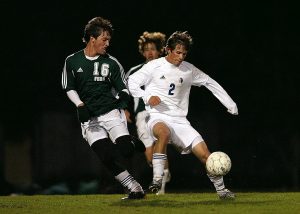 |
2. Solis 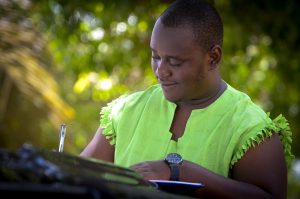 |
3. Elena |
4. Raúl, Sara, Lucía, y yo |
5. Paquito
|
6. Sr. Morín
|
11. Identificar. Look at the pictures and the names of the famous Spanish speakers (painters) below. Practice asking “¿Quién es?” and answering the question with the person’s name.
Modelo:
| Estudiante A | Estudiante B |
| ¿Quién es esta persona? | Es Don Juan Tenorio. |
| Pintores famosos del mundo hispano | 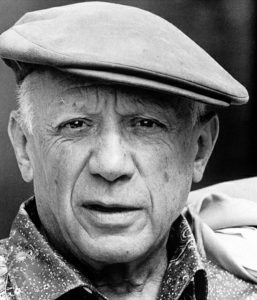 |
 |
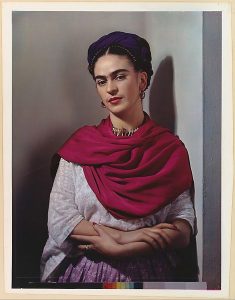 |
| Pablo Picasso | Salvador Dalí | Frida Kahlo |
12. Leer. Read the biography of Mon Laferte and in groups answer the following questions. Remember to write down your answers.

Norma Monserrat Bustamante Laferte (Mon Laferte) es una joven cantautora (singer) y compositora chilena. Ella es feminista y habla de los derechos (rights) humanos en Chile. Es de la ciudad de Viña del Mar pero ahora vive en México. Ella tiene una carrera musical con éxito y con un premio Grammy Latino. Una canción famosa se llama “Amado Mio.”
- ¿Es Mon Laferte joven?
- ¿Es Mon Laferte periodista?
- ¿Cómo se llama una canción famosa?
- ¿De dónde es la artista?
- ¿Qué apellidos tiene la cantante?
13. Conversar. Study the chart and then take turns asking your partner, ¿Quién es / Quiénes son…?. Your partner will respond using the subject pronoun and profession provided in the chart. You do not need to go in order through the names
Modelo:
| Estudiante A | Estudiante B |
| ¿Quiénes son Sara y Raúl? | Ellos son estudiantes. |
| Nombre | Pronombre | Profesión |
| Iris | She | Author |
| Elena | She | Dentist |
| Paquito | He | Firefighter |
| Patricia | She | Teacher |
| Fernando | He | Professor |
| Sr. Morín | He | Artist |
| Sara y Raúl | They | Students |
| Marta | She | Counselor |
| Pedro, Daniel, y Luis | They | Athletes |
| Raquel y Eva | They | Teachers |
14. Conversar. Ask the following questions to at least three of your classmates and fill out the table below.
- ¿Cómo te llamas?
- ¿Qué pronombre usas?
- ¿Cuál es tu profesión? (if you do not work, imagine the job you will want to do in the future)
| Nombre | Pronombre | Profesión |
| … | … | … |
| … | … | … |
| … | … | … |
15. Escuchar. Listen to the following audio clips and write the number (between 1-29) you hear.
| A) 27 | |
| B) | |
| C) | |
| D) | |
| E) | |
| F) | |
| G) |
16. Adivinar. Find a partner. Think of a number between 1-99 and your partner will try to guess your number. Give clues using the Vocabulario útil below and take turns.
Vocabulario útil:
- Estoy listo/a=I’m ready.
- Más=higher
- Menos=lower
- ¡Sí, correcto!=Yes, that’s right!
Modelo:
| Estudiante A | Estudiante B |
| Estoy lista. | ¿Es cinco? |
| No, es más. | ¿Es veinte? |
| No, es menos. | ¿Es quince? |
| ¡Sí, correcto! |
17. Escribir. Write down and solve the basic addition problems. Next, make up some addition problems (only using numbers 1-99) for your partner. Your partner will write them down and solve them.
8+20= …
7+3= …
10+5= …
20+7= …
2+5=…
Modelo:
| Estudiante A | Estudiante B |
| Siete más seis son… | Writes (7+6=13). Says, “Trece.” |
| Muy bien. |
18. Conversar. In this class, you will be completing various groups activities. Ask the students sitting on your left and on your right their phone numbers and their emails.
¿Cuál es tu correo electrónico?
¿Cuál es tu número de teléfono?

